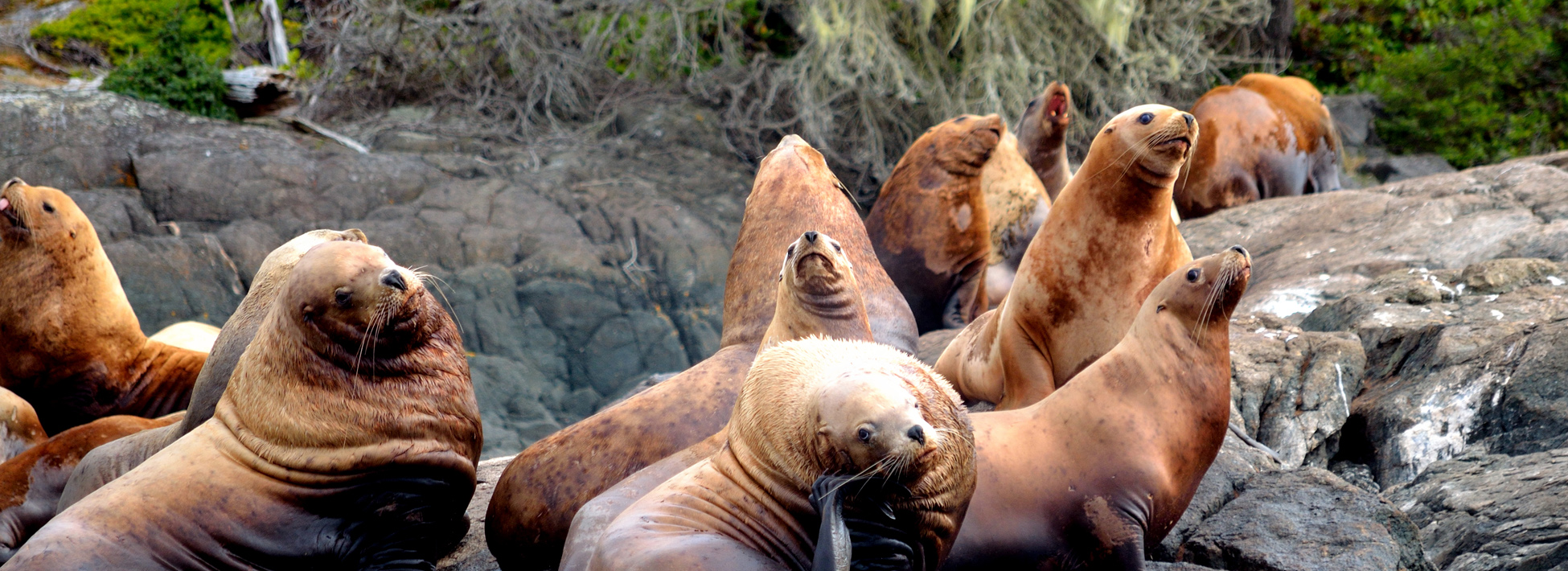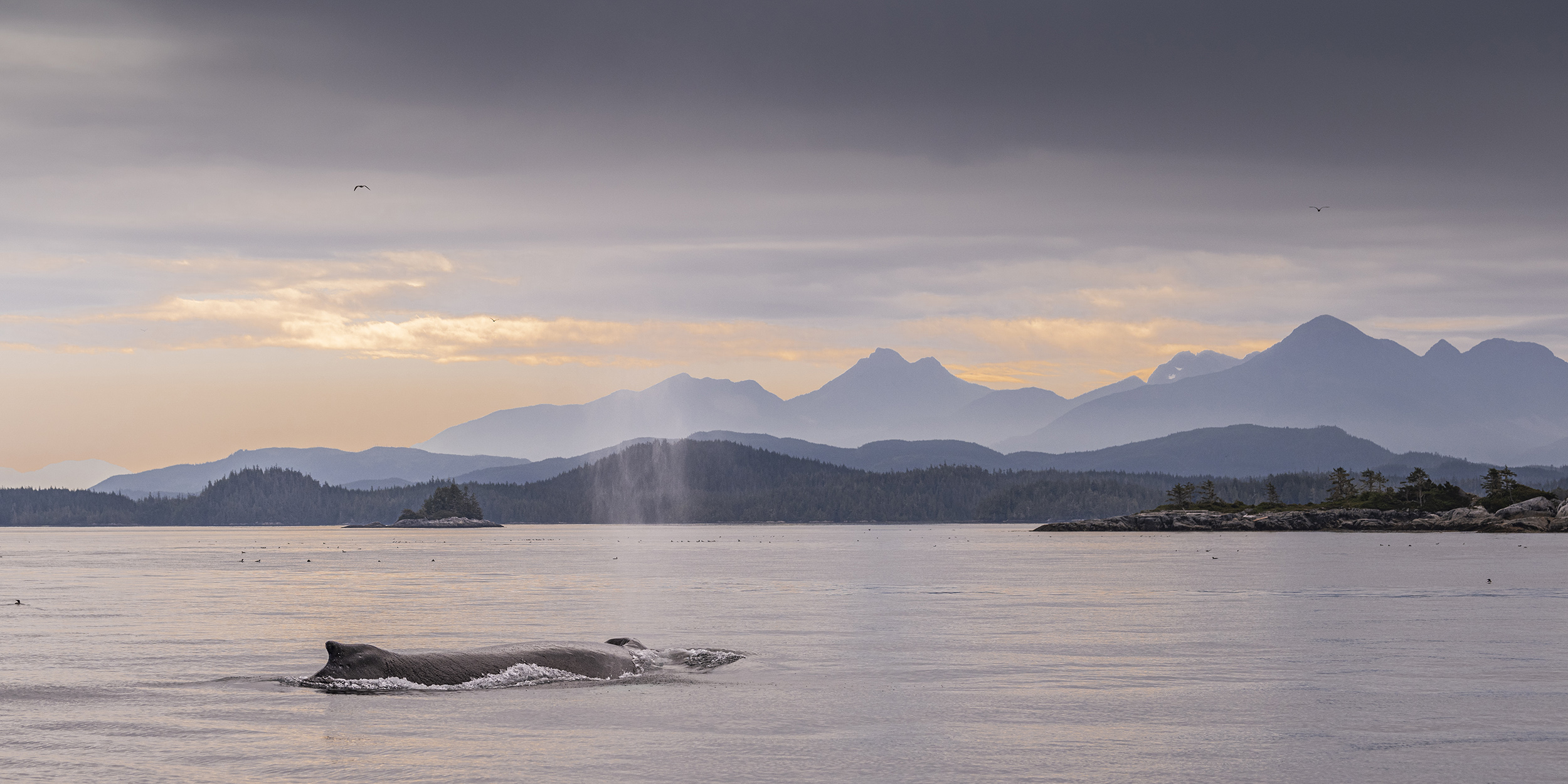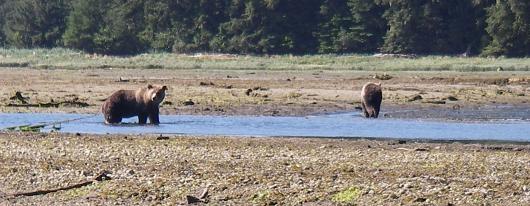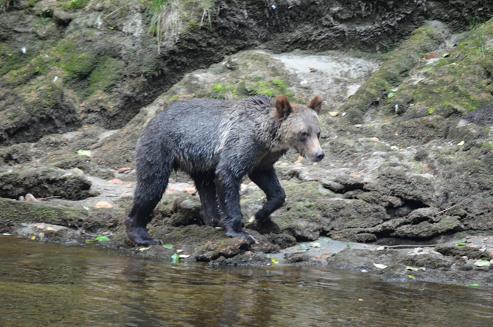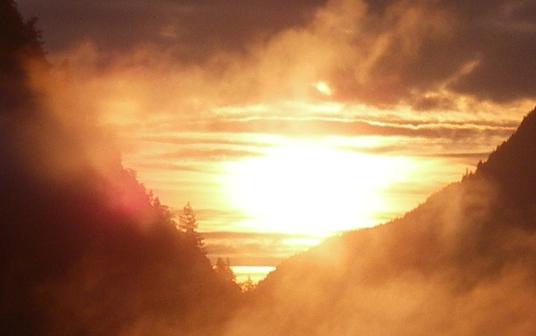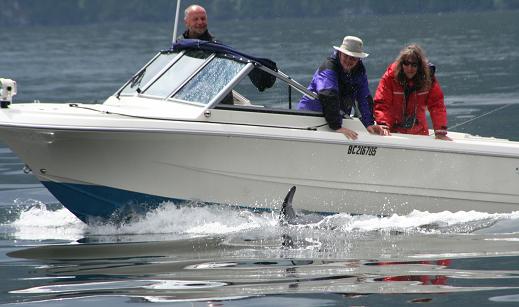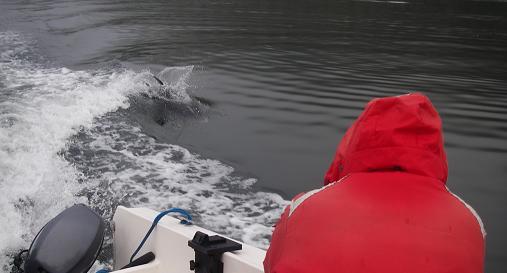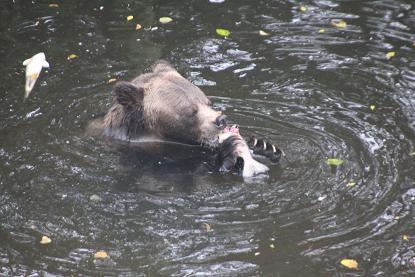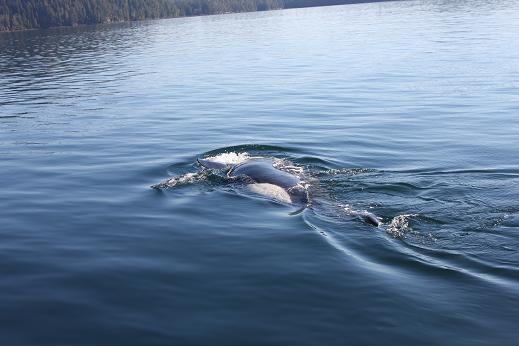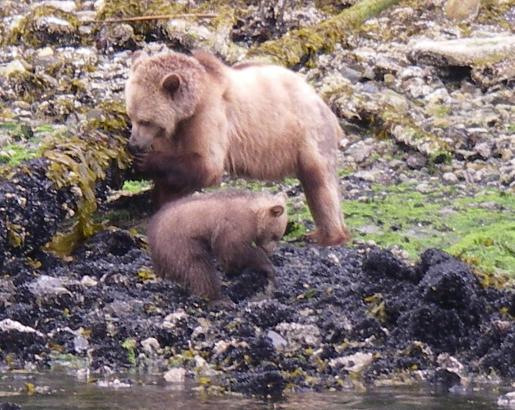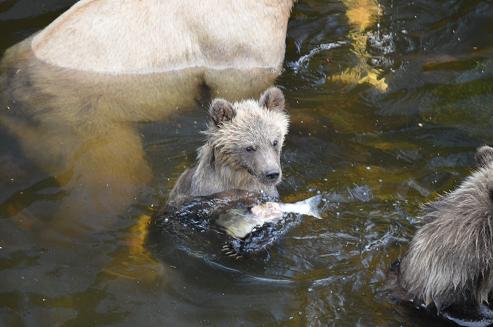In a good spyhop the orca / killer whale has about half of it’s body out of the water. This is more of an orca backstroke where it was passing the boat and rolled over and stuck it’s head out of the water. The description of what is happening is not important because the picture is interesting and unique.
